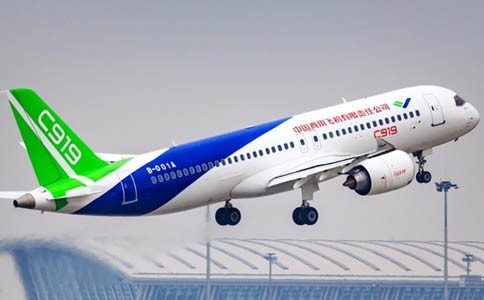
![]() Boeing earlier this week outlined multiple changes it expects to make within weeks as a result of an October crash near Indonesia that raised concerns about an automated safety system on the plane. The urgency of those upgrades heightened significantly on Wednesday when the US joined other nations and grounded the plane after it appeared that similar issues may have played a role in the crash in Ethiopia.
Boeing earlier this week outlined multiple changes it expects to make within weeks as a result of an October crash near Indonesia that raised concerns about an automated safety system on the plane. The urgency of those upgrades heightened significantly on Wednesday when the US joined other nations and grounded the plane after it appeared that similar issues may have played a role in the crash in Ethiopia.
If the change is sufficient, this setback “should have very little long-term impact on the success of the Max,” Herbert said.
Boeing, in consultation with the US Federal Aviation Administration, will add redundancy and other limits to the Max’s  Maneuvering Characteristics Augmentation System, MCAS, so it’s less likely to command the repeated nose-dives preceding the Lion Air crash on October 29 that killed 189 people near Jakarta, the company said in a statement on Monday.
Maneuvering Characteristics Augmentation System, MCAS, so it’s less likely to command the repeated nose-dives preceding the Lion Air crash on October 29 that killed 189 people near Jakarta, the company said in a statement on Monday.
The FAA promised it would act “no later” than April. Boeing predicted it would be completed “in the coming weeks.”
In the Lion Air crash, a faulty sensor at the nose of the plane sent an erroneous warning that the plane’s nose was pointed too high and could plummet out of control because of a loss of lift on the wings, known as an aerodynamic stall. No such danger actually existed.
US lawmakers say they expect a fix in a matter of weeks to the problems that may have caused the second deadly crash of a Boeing 737 MAX in four months and grounded the plane worldwide.

China’s Boeing China has begin producing its own Max …the C919. China’s Verson is expected to be sold at cut rate price.
Because the Max, with its bigger engines, was more prone to a stall, Boeing devised MCAS as an additional safety measure. If it sensed a stall in those limited conditions, it didn’t wait for the pilots to act. It commanded the so-called trim system to push down the nose.
That confused the Indonesian pilots and they fought the system for more than nine minutes until the aircraft dove into the sea.
Single sensor
Boeing’s package of fixes attempts to prevent that from happening again. A single sensor — known as an angle of attack vane — will no longer be capable of triggering an MCAS-induced dive, according to Boeing. The revised MCAS will use inputs from a second sensor to ensure such failures are more rare.
The system also won’t act repeatedly if pilots overcome it, according to the company. The Indonesian pilots counteracted MCAS at least two dozen times before the crash. And the revised MCAS won’t make such aggressive nose-down movements, according to the company.
In addition, Boeing and the FAA plan to mandate changes in airline flight manuals and to give pilots additional training in how to overcome a malfunction.
The union, which represents American Airlines pilots, hasn’t yet received a briefing from Boeing about the changes, Tajer said.
“We don’t have an initial objection to the fixes, and they look OK to us,” said Jon Weaks, president of the Southwest Airlines Pilots Association.
The Tunion would like to have more detail on the development, control parameters and testing done on the algorithm that would trigger MCAS, he said. It also hasn’t been briefed on the update by Boeing.
Boeing patches
The Boeing patches to the plane involve only software and don’t require more than about one hour per aircraft to install. Boeing hasn’t commented on compensating carriers, but airlines typically are reimbursed for at least some costs associated with such repairs as well as the inability to use a plane.
John Cox, the president of Safety Operating Systems who has participated in multiple crash investigations in his former job as a union representative, said he was confident that the aircraft manufacturer and the US aviation regulator will add adequate fixes to the Max.
“Boeing has the expertise and FAA has the expertise and they will come up with an improvement to the airplane and get it back in the air,” Cox said.
Boeing declined to comment beyond its public statements, including questions about whether the company could have rushed out a patch before the latest accident.
In that case, Boeing insisted that the plane’s rudder was not to blame and it and the FAA initially resisted redesigning the entire rudder. Years later, they agreed to a redesign and ordered alterations to the rudder.
By comparison to those years-long battles, the work on MCAS has been swift, Cox said. What’s more, it’s important not to rush into repairs without considering the consequences, he said.
“This is one of the ways that we’ve kept aviation safe is by taking careful, deliberate steps to not introduce more risks than we’re trying to mitigate,” he said.